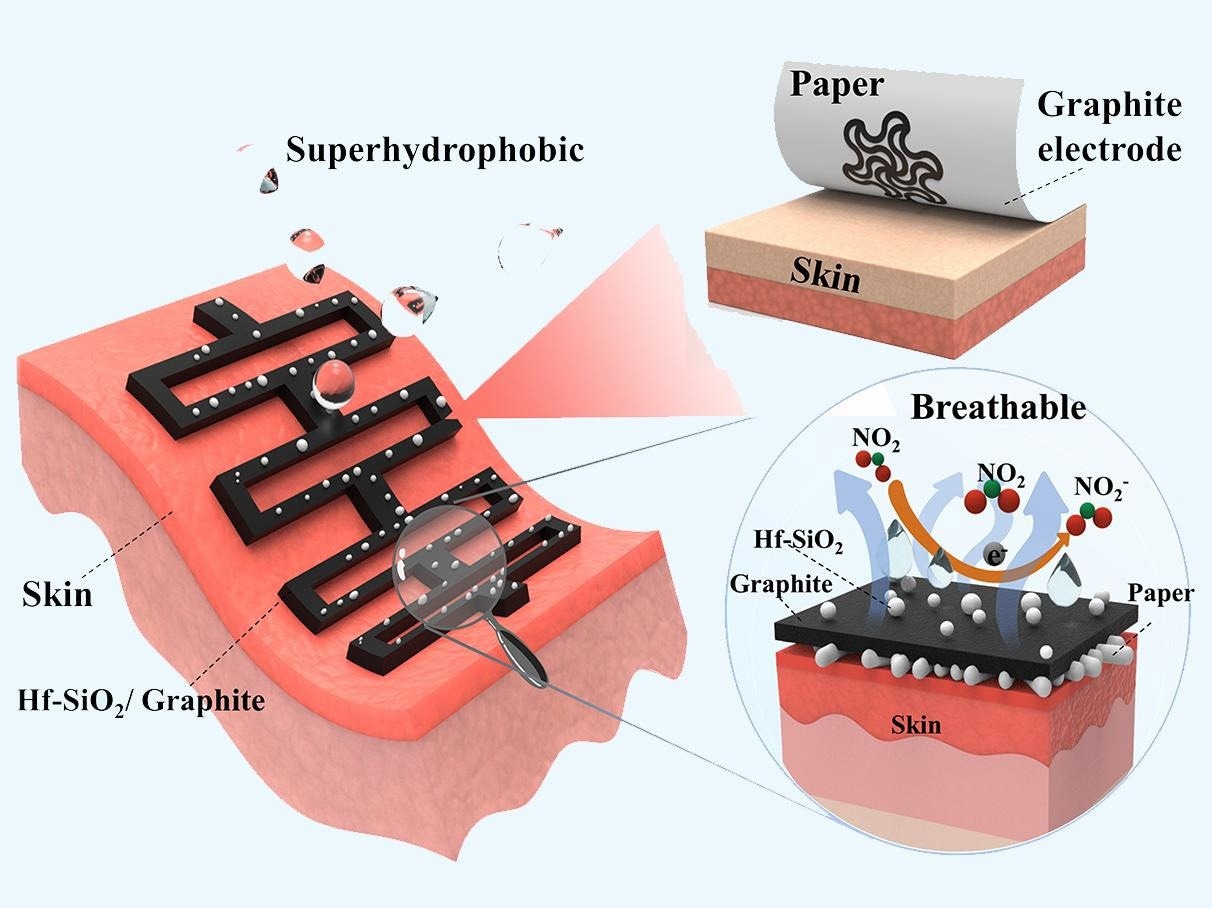
The sensors use a silica hydrophobic coating, which has not been used previously for pencil-on-paper sensors. These sensors were also designed to be stretchable, making it possible to wear on the skin. Image Credit: Provided by Huanyu “Larry” Cheng.
Earlier, the team had developed a pencil-on-paper sensor that can be used in “smart diapers” to detect wetness. But that sensor was not hydrophobic, so while it was beneficial in detecting moisture, it cannot be utilized to precisely track other health variables where moisture may meddle with the sensing and the outcomes.
In this case, we are looking to measure gas molecules, temperature, and electrical physiological signals. If we get interference from the moisture or rapid humidity, the signal and mechanical robustness will be compromised. That’s why we designed a superhydrophobic coating, making the sensor practically waterproof.
Huanyu “Larry” Cheng, Study Co-Corresponding Author, James L. Henderson Jr. Memorial Associate Professor of Engineering Science and Mechanics, Penn State
The scientists utilized Silica hydrophobic coating, which had been used for other sensors, but not for the pencil-on-paper sensors. Also, these sensors were designed so that they are stretchable, making it feasible to wear on the skin.
With this sensor, you don’t need bulky equipment. We use low-cost manufacturing approaches to make them accessible. The sensor is made of graphite material exfoliated from a pencil. So, the pencil material is really the sensing material because it's a conducting material.
Li Yang, Study Co-Corresponding Author, Formerly Visiting Scholar, Department of Engineering Science and Mechanics, Penn State
Yang works at the Health Sciences and Biomedical Engineering School at the Hebei University of Technology, Tianjin, China.
Besides capturing gas and temperature molecules, the sensors have the potential to also capture the electrical physiological action to track cardiovascular activity, muscular motion, and brain signals.
The scientists stated that the device is capable of sensing and stimulation —for instance, the sensor could manage thermal therapy by sending a current to the skin.
Cheng stated that the accessibility, affordability, and versatility of the sensor—concerning the scope of vital signs it could quantify—might make it beneficial for public health applications rather than only individual health purposes.
In general, we are interested in the population health. So, with this low-cost manufacturing process and sensor accessibility, we are hoping we can provide this to a really large population, and then collect information about the variation between individuals to be able to establish a baseline, according to the patient population in different geographic locations or in different populations.
Huanyu “Larry” Cheng, Study Co-Corresponding Author, James L. Henderson Jr. Memorial Associate Professor of Engineering Science and Mechanics, Penn State
The study’s other authors are Ankan Dutta, a doctoral student in the Penn State Department of Engineering Science and Mechanics; and Ye Xue, Zihan Wang, Xue Chen, Peng Gao, Runze Li, Jiayi Yan, Guangyu Niu, Ya Wang, Shuajie Du, and Li Yang, all of the Hebei University of Technology in Yianjin, China.
Cheng is affiliated with the Materials Research Institute; the Institutes of Energy and the Environment; the Institute for Computational and Data Sciences; the Engineering, Energy, and Environmental Institute; and the Sustainability Institute, all at Penn State.
This study was financially supported by the National Institutes of Health, the National Science Foundation, and the Center for Human Evolution and Diversity at Penn State, as well as the National Natural Science Foundation of China, the Key Research and Development Project of Hebei Province, and the China Postdoctoral Science Foundation’s Project.
Journal Reference
Xue, Y., et al. (2023) Superhydrophobic, stretchable kirigami pencil-on-paper multifunctional device platform. Chemical Engineering Journal. doi.org/10.1016/j.cej.2023.142774.